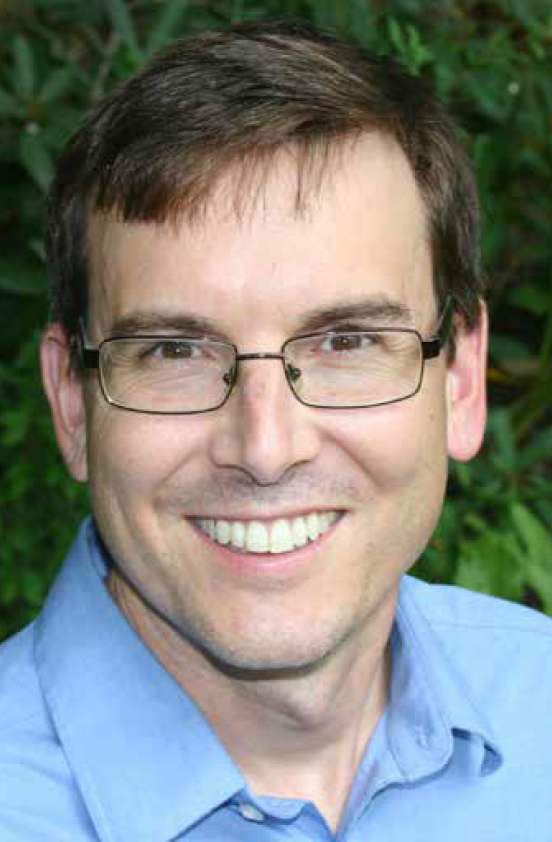A New Model for a Career in Industry
Biophysicist Mark Kaplan explores a fast-track to bring innovation to patients.
Published June 1, 2014
By Hannah Rice
Academy Contributor
For Mark Kaplan, a biophysicist who chose industry after his postdoc, the appeal of science lies in its predictability. From an early realization that he could position the stars and planets by studying astronomy—and check his predictions peering through his own telescope—to his work in drug discovery, his interest has drawn on a fascination with tracing the logic behind phenomena and harnessing it to answer questions.
“There are those who are more motivated by ideas and those more motivated by problems; there’s a relationship between the two, but I found myself more attracted to solving problems than to exploring ideas,” Kaplan says. “That’s what motivated me to take a leap and get my first job in industry.”
Kaplan is now a senior principal scientist at Pfizer’s Centers for Therapeutic Innovation (CTI) New York, a new facility at the Alexandria Center for Life Sciences, where he works with academic research labs to design drugs in several disease areas. In December 2012 Kaplan brought his work on myocardial infarction (i.e., heart attack) to The New York Academy of Sciences, co-organizing a successful Hot Topics in Life Sciences symposium that explored investigational treatments such as cell-based therapies and strategies to preempt heart damage.
Finding Drug Discovery
But when Kaplan tried to organize an astronomy club in junior high school, he was disappointed by the response: “Being the nerd that I was, I couldn’t understand why that many other people weren’t interested,” he says.
“One particular aspect that always struck me is that when you look at the stars you’re also looking back in time: the light that you’re seeing was emitted hundreds or thousands of years ago. The star that you’re looking at could have blown up and given the vast distances of space you won’t know it.”
Despite this vastness, we can study the stars and watch as their movements validate our models. In high school, Kaplan was drawn to this same predictability in the periodic table of elements. And eventually, as he began searching for patterns that govern life, he became interested in understanding “life as a chemical reaction,” explaining how biochemistry can “give life, make things alive, and give you memory and emotion.” Although Kaplan recognizes that this depiction is perhaps too reductionist, it’s a quest that intrigues him.
Kaplan studied biochemistry at Harvard as an undergraduate and pursued a PhD in biophysics with a focus on radiation biology at the University of California, San Francisco. As a postdoc studying the genetic basis of cancer at the University of Wisconsin–Madison, he looked at what happens when a specific DNA repair mechanism is inhibited. Cells repair DNA after it is damaged by exposure to environmental insults such as radiation, and errors in DNA that are not corrected can lead to cell growth abnormalities. This time, Kaplan could design experiments to target a particular section of DNA in the lab, and then find out how the modifications affect a living animal using gene-knockout technology.
A Career in Industry

After completing his postdoc, Kaplan decided to work in industry because of its focus on translating research into solutions for patients. He says he realized that “if your motivation is to solve problems, then industry is probably a better place for you.”
Today, Kaplan works with a staff of 25 at CTI-NY, which is not intended to replace the traditional pharmaceutical model, with thousands of researchers on a campus shepherding medicines from inception to large-scale clinical trials and rollout. Instead, it serves as a bridge between academia and industry, and its scientists look for ways to speed the transition from “a really interesting scientific discovery [to] a new compound and a new medicine.”
Although his background is in oncology, Kaplan is leading a team of scientists to develop drugs for cardiovascular disease, and he says that this flexibility is central to the CTI strategy. CTI is “disease agnostic,” meaning that researchers are not focused on a specialization but are instead searching for agents that seem particularly promising for medical uses.
Their approach involves working closely with experts in the field at research institutions, and CTI-NY is designed to be conducive to such collaboration—it’s centrally located in NYC, it provides lab space on-site, and project leadership is shared between a university PI (a professor) and principal scientist at Pfizer. The idea is to create an equal partnership, so intellectual property is also co-owned and academics can present results in medical journals.
A Shift Toward Greater Openness
The pharmaceutical industry has shifted away from a “closed system” toward greater openness; a “striking emphasis on external innovation” now prevails, Kaplan says. Previously, companies pursued therapies created by their own scientists, but they are now seeking to “access the scientific breakthroughs that are occurring in the wider world,” which he thinks is an exciting change. The CTI model is replicated in other cities (Boston, San Francisco, and San Diego), bringing Pfizer staff into proximity with academic medical centers in these local areas. Kaplan explains that “being able to meet face to face is important for building trust and for making sure that goals are aligned.”
Drug discovery as a field is always racing to find new therapies: to contend with internal competition, to meet patient demand, and to keep up with itself by replacing drugs whose patents are ending. Although Kaplan wonders whether the “easy drugs” that can keep up with the growing costs of R&D have been found, he answers his own query by saying that if he thought so, he’d be in a different business. Kaplan thinks that large molecules such as monoclonal antibodies and antibody-drug conjugates hold the greatest promise for therapeutic advances in coming years, as well as cell-based therapies (stem cells), which when fully realized will be a “quantum leap in terms of what we can do for patients.”
Building Networks
Kaplan says, with a tinge of irony, that it’s “an interesting time to be a scientist in New York,” pointing in the next breath to the old Chinese curse, May you live in interesting times. There are fewer industry jobs in New Jersey, where big pharmaceuticals have traditionally been based in the metro area. But New York City is home to innovation that is driving research in new directions, with projects like CTI leading this effort. There is also a strong research base at universities, and smaller biotech companies and nonprofits are in vogue: “If you are actively managing your career and looking for exciting opportunities they’re absolutely there.”
The ability to take new directions often depends on leadership, and Kaplan is quick to acknowledge the role mentors have played in his career. He is particularly grateful to those who gave him independence to take on projects that didn’t always match his qualifications, allowing him to “go out and fail,” as he jokingly describes it. Indeed, Kaplan’s career is defined by adaptability. He calls his transition to new research areas at Pfizer “a great learning opportunity” and talks with enthusiasm about his experiences interacting with other scientists in CTI and academia. The Academy too serves as an important venue for cross-sector and cross-organization interaction, Kaplan points out; you could “run into professors you might want to collaborate with.”
In our hyper-connected world where sharing is the it verb, it’s perhaps no surprise that science has followed suit, with scientists from every sector and discipline looking for new ways to team up to find solutions for some of our most challenging diseases.
This story originally appeared in the spring 2014 issue of The New York Academy of Sciences Magazine.

